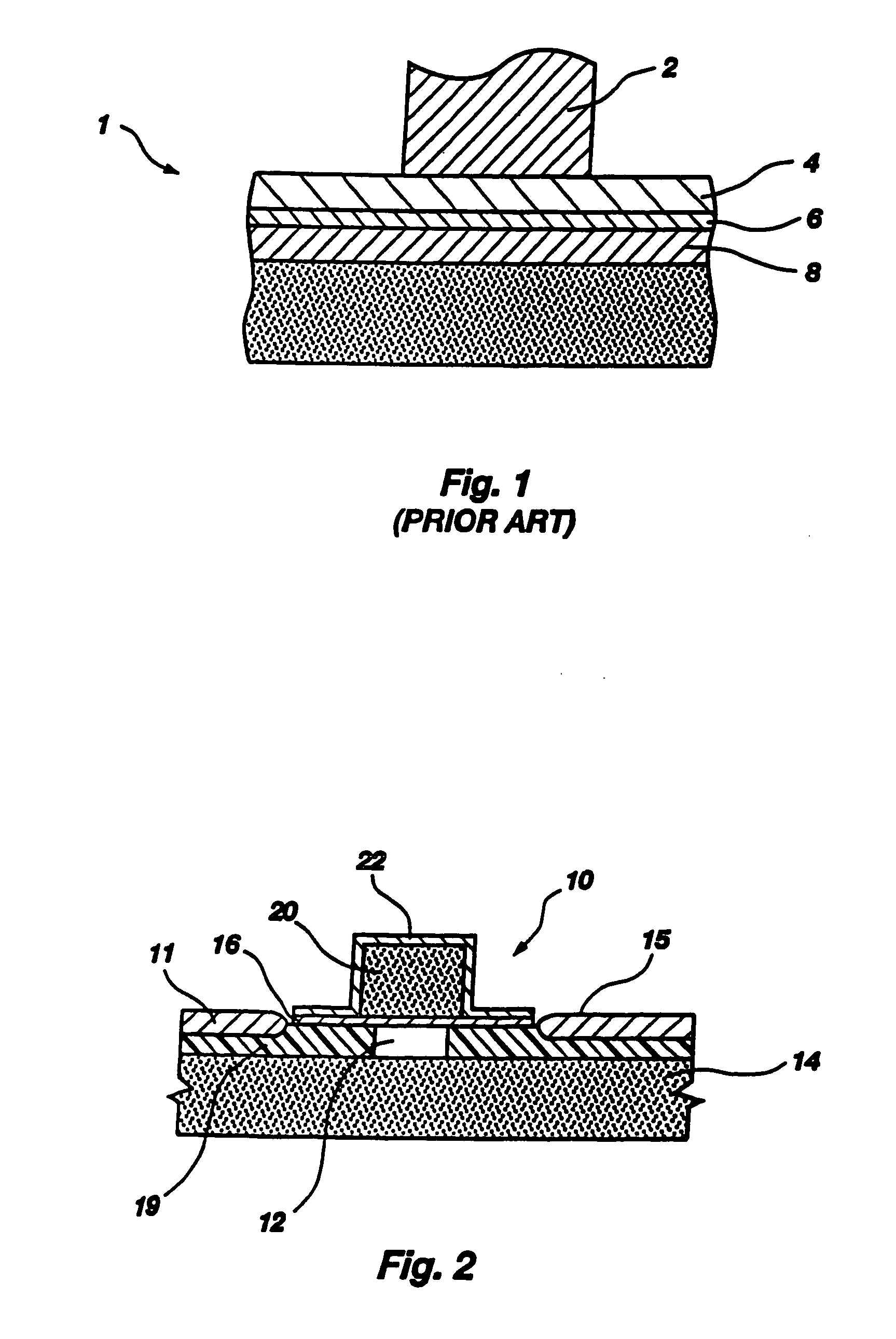Electrical and thermal contact for use in semiconductor devices and corresponding methods
a technology of electrical and thermal contact and semiconductor devices, which is applied in the direction of semiconductor devices, semiconductor/solid-state device details, electrical apparatus, etc., can solve the problems of increasing potential, affecting the fabrication of electrical and thermal contacts, and affecting the appearance of electrical contacts, etc., to achieve the effect of facilitating the fabrication of relatively small electrical and thermal contacts
- Summary
- Abstract
- Description
- Claims
- Application Information
AI Technical Summary
Benefits of technology
Problems solved by technology
Method used
Image
Examples
Embodiment Construction
[0026] The present invention comprises an electrical and thermal contact for a contacted structure of a semiconductor device. With reference to FIGS. 2 and 3, in a preferred embodiment, the electrical and thermal contact 10 is disposed on a surface 15 of a semiconductor device 14. Electrical and thermal contact 10 may be positioned adjacent a contacted structure 12, such as an antifuse or other memory element, that is exposed through oxide layer 11, such that it electrically and thermally contacts the contacted structure 12. Preferably, electrical and thermal contact 10 contacts an electrically conductive phase change component 13 of contacted structure 12 (FIG. 3), such as the memory element disclosed in the '758 Patent. Preferably, contacted structure 12 includes a dielectric element 19 surrounding the lateral peripheral portions of phase change component 13 to thermally and electrically insulate the latter.
[0027] Electrical and thermal contact 10 includes a thin, intermediate co...
PUM
 Login to View More
Login to View More Abstract
Description
Claims
Application Information
 Login to View More
Login to View More - R&D
- Intellectual Property
- Life Sciences
- Materials
- Tech Scout
- Unparalleled Data Quality
- Higher Quality Content
- 60% Fewer Hallucinations
Browse by: Latest US Patents, China's latest patents, Technical Efficacy Thesaurus, Application Domain, Technology Topic, Popular Technical Reports.
© 2025 PatSnap. All rights reserved.Legal|Privacy policy|Modern Slavery Act Transparency Statement|Sitemap|About US| Contact US: help@patsnap.com



